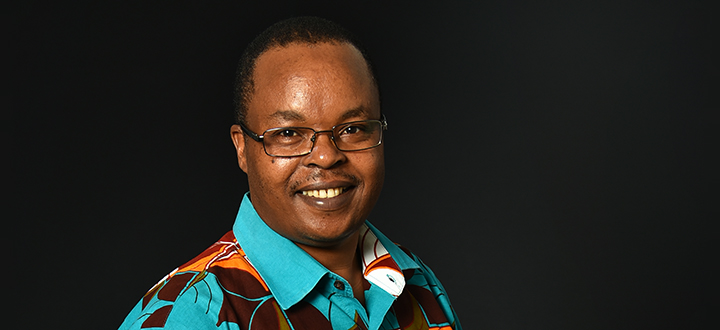
Dr Lebea Nthunya has become the first student to graduate from the joint doctoral programme between Unisa and Ghent University (UGent) in Belgium.
A Lesotho citizen who obtained his master’s with distinction from the University of Johannesburg, Nthunya enrolled for the joint PhD between Unisa and UGent in 2016. He successfully defended his thesis on 4 June 2019 at a prestigious event held at UGent in Belgium, where his PhD degree was also conferred.

Prof Korneel Rabaey (Chair: Examination Jury), Prof Arne Verliefde (Supervisor), Dr Lebea Nthunya, Prof Bas Heijman (Member: Examination jury), Prof Edward Nxumalo (Secretary: Examination Jury) and Prof Stijn Van Hulle (Member: Examination Jury)
His thesis, Nano-enhanced membrane distillation membranes for potable water production from saline/brackish water, was produced under the supervision of Prof Bhekie Mamba, Executive Dean of the College of Science, Engineering and Technology (CSET), Prof Sabelo Mhlanga of MINTEK and Prof Arne Verliefde of UGent.

Congratulations to the new PhD, Dr Lebea Nthunya, and Prof Edward Nxumalo
In the last two years of his studies, he worked closely with Prof Edward Nxumalo from Unisa’s Nanotechnology and Water Sustainability (NanoWS) research unit, who was his administrative supervisor, and who has vast experience in membrane technology for water treatment.
Nthunya published 13 manuscripts in peer-reviewed journals during his PhD tenure, and this is in addition to eight accredited manuscripts from his previous degree, making a total of 21 published papers. From the significant results he has produced, he demonstrated a possible and economically viable water desalination system. His future endeavours are centred on research and development in water-stressed regions.
He will graduate at Unisa during the Spring Graduations this year, since both universities have to confer the degree.
* Submitted by Thembeka Ntuli-Mpapama, Communication and Marketing Specialist, College of Science, Engineering and Technology
Publish date: 2019/06/21